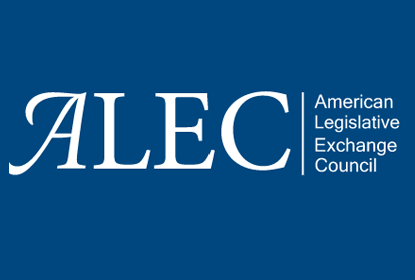
To access the original article published:https://alec.org/article/schools-should-prioritize-great-teachers-over-bureaucratic-bloat/
What makes a great teacher? Whether it’s the history teacher who gives students a vivid window into the past or the quirky geometry teacher who practically worships Pythagoras, great teachers sculpt their students’ lives invaluably for years after the school day is done. The job of employee policy and system administrators should be, first and foremost, to bring great teachers into the classroom and support them in their work. Because teachers play such a crucial role, researchers are beginning to scrutinize how administrators decide who they hire, fire and lay off in times of financial belt-tightening.
While it was once considered radical to consider a teacher’s actual performance when evaluating his or her record and making workforce decisions, perceptions about merit-based hiring and firing are changing. According to a study by the National Council on Teacher Quality (NCTQ), almost sixty percent of the nation’s largest school districts use performance evaluation as an important part of deciding which teachers to lay off in response to budget shortages. This is triple the percentage of districts that considered performance in layoffs in 2010. The tide is shifting, and it’s worth considering the reasons behind the shift.
Before the change to considering performance, teacher layoffs were conducted almost exclusively by seniority. Nearly seventy percent of districts used seniority as the primary factor in deciding who among their teaching force to lay off in 2010. These seniority policies—often called last hired, first fired or last in, first out (LIFO) policies—have fallen from popularity due to public opinion that they hurt students by protecting bad teachers at the expense of good ones.
Under a LIFO policy, a poorly-performing teacher may only be motivated to improve in the early years of teaching, when the threat to his or her job is high. Once seniority protection kicks in, the system encourages teachers to relax and let bad habits slip back in. And the protections of seniority don’t take long to acquire in a field that has its highest rate of turnover in the first five years. Research bears this logic out, showing that student test scores increased when districts did not use LIFO policies to decide layoffs.
However, the issue is more complicated than simply removing LIFO policies from district and state regulations. States like Minnesota have removed such policies on the state level, only to see districts continue to use them because they are easy. Unfortunately, there is no flawless, single alternative to LIFO. Experts disagree about how teacher performance is best measured. And recent research reveals that standardized test scores, by far the most common measure of student learning, do not predict long-term student outcomes, such as college graduation rates, as well as we once thought. The flawed nature of test scores as a proxy for success makes it difficult to rely on them to measure teacher performance. The solution is not to rely on any one metric, but to allow principals and school districts to establish a range of indicators and metrics that can help administrators identify poor teachers.
That’s why ALEC’s model policy, The Teacher Quality Assurance Act, mandates that educational leaders spend a significant amount of time studying how to best evaluate teacher performance using factors unique to the specific dynamics of their state, in addition to removing LIFO policies. The new focus on teacher quality should not and does not airbrush away the complexities of teacher evaluation in hiring and firing. To the extent that experience correlates with effectiveness, principals ought to be able to consider seniority in making layoff decisions. However, students are clearly not being prioritized when teachers remain in the classroom based on seniority alone.
Interestingly, the argument about teacher layoffs, which is usually necessitated by budgetary constraints, could become moot if the principles of more merit-based teacher evaluation were applied to the education system as a whole.
A recent report from EdChoice reveals that the increase in non-teaching staff was more than seven times the increase in students and almost three times the increase in teachers between 1950 and 2015. It also points out that from 2009 to 2012, during the recession, the number of teachers in the workforce declined proportionally more than the number of administrators. The data does not reveal whether there is actually a bias toward protecting non-teaching jobs during layoffs, but the incredible growth in non-teaching staff is certainly affecting district budgets.
Since test scores have largely stagnated or even declined over the last few decades, while staffing numbers continue to rise, it seems unlikely that the boom in administrator hiring has produced real benefits for students. Administrative bloat and increased numbers of compliance staff are sucking up education dollars that would otherwise be able to be invested in the education system’s single most precious resource: great teachers. Teachers are, after all, the ones actually doing the difficult and important work of educating our children.
We are no longer in a recession, and the specter of layoffs may be temporarily retreating from the minds of educators across the nation. But, before it goes, we ought to take a moment to reconsider our policies and assumptions so that when the next round of budget-tightening times comes around, we can make decisions that will best serve the students. By streamlining district budgets and making sure we’re rewarding effective teachers instead of multiplying bureaucrats, states and districts can retain the most crucial staff for students’ achievement and learning, rather than protecting those who are failing American students.

